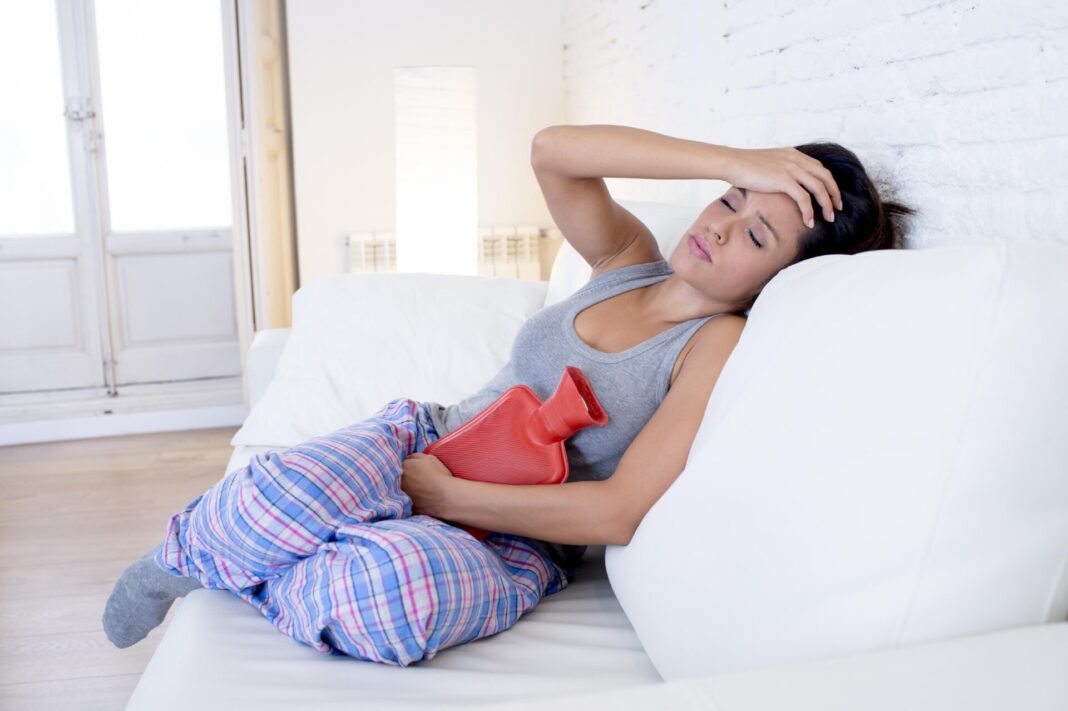Menstrual cramps are a familiar discomfort for many women, but what happens when they linger after the period has ended?
While post-menstrual cramping can be unsettling, it’s usually not a cause for alarm. Instead, it’s often linked to hormonal fluctuations or underlying health conditions.
Hormonal changes, for instance, can trigger cramps as the body adjusts to shifting estrogen and progesterone levels.
Here are the seven reasons women experience cramps after their period:
1. Ovulation
A frequent cause of cramps following a period is ovulation. This process generally happens approximately two weeks after your menstrual cycle begins, although some women may experience it sooner.
During ovulation, an egg is released from the ovary, which can result in mild discomfort or pain on one side of the abdomen, commonly referred to as “mittelschmerz.”
Although this discomfort is typically short-lived, ranging from a few hours to a couple of days, it can sometimes be confused with menstrual cramps.
2. Hormonal Changes
For women, fluctuations in hormone levels are common, particularly following menstruation. These changes can trigger uterine muscle contractions, leading to cramping sensations even after the period has concluded.
3. Fibroids
Uterine fibroids are another potential cause of post-menstrual cramps.
These are benign tumors that grow either within or on the uterus, leading to various symptoms such as heavy menstrual bleeding, discomfort during intercourse, and cramping that may persist beyond your menstrual cycle.
Although fibroids are typically non-threatening, they can cause considerable pain and may need medical intervention if they increase in size or result in ongoing discomfort. In certain instances, fibroids might cause post-menstrual cramping by exerting pressure on surrounding tissues.
4. Endometriosis
Endometriosis is a medical condition where tissue akin to the uterine lining develops outside the uterus, including on the ovaries, fallopian tubes, or other pelvic organs. This tissue reacts to hormonal fluctuations similarly to the lining of the uterus, which can lead to pain and cramping throughout the menstrual cycle, including after your period has concluded.
Endometriosis can cause intense cramps and may also result in additional symptoms such as excessive bleeding, discomfort during sex, and difficulties in conceiving.
5. Adenomyosis
Adenomyosis is a condition resembling endometriosis; however, in this situation, the endometrial tissue infiltrates the muscular layer of the uterus.
This growth can lead to an enlarged uterus and may result in prolonged menstrual periods, heavy bleeding, and cramping even after a period has ended.
Adenomyosis can be quite painful and often necessitates medical treatment to alleviate the symptoms. Women experiencing this condition might find that their cramps persist beyond their typical menstrual cycle.
6. Pelvic Inflammatory Disease (PID)
Pelvic inflammatory disease (PID) is an infection affecting the female reproductive organs, frequently triggered by sexually transmitted infections (STIs) such as chlamydia or gonorrhea.
PID can cause ongoing pelvic discomfort, irregular menstrual cycles, and cramps that may happen before, during, or after menstruation.
Additional indications of PID may include unusual vaginal discharge, fever, and discomfort during sexual activity. If untreated, PID can result in serious issues, including infertility, making it crucial to consult a healthcare professional if you suspect you might have it.
7. Ovarian Cysts
Ovarian cysts are sacs filled with fluid that develop on the ovaries. Although many ovarian cysts are benign and resolve naturally, larger ones or those that burst can lead to cramping and pelvic discomfort at any point in the menstrual cycle.
Cramps after a period may indicate the presence of an ovarian cyst, particularly if the pain is sudden, intense, or concentrated on one side of the abdomen.
If you experience sharp or increasing pain, it’s essential to seek medical care to eliminate the risk of complications such as ovarian torsion.

